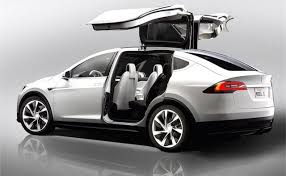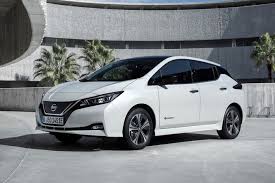The engineers at Tesla have shared their secrets of control, transmission and suspension Model 3
 Tesla Model 3 almost captured the market of electric vehicles, with high speed, high performance and energy efficiency. It is easy and comfortable to operate, it is stable on the road, and its power reserve allows you to move over long distances.
Tesla Model 3 almost captured the market of electric vehicles, with high speed, high performance and energy efficiency. It is easy and comfortable to operate, it is stable on the road, and its power reserve allows you to move over long distances.
Tesla engineers spoke about the design and development process of Model 3. It turns out that design and safety were the main points in the development of the electric car. The chassis and suspension of the Model 3 were designed from the ground up, tires engineers lovingly called the “undetected heroes” of the vehicle as they are crucial to the handling and stability of an electric vehicle on the road. The development of model 3 tires began back in 2015, when Tesla began working with manufacturers to create the perfect tires for an electric sedan.Tesla Model 3 Tires
The engineers noted that when developing tires for a high-performance electric vehicle, such as the Model 3, they experienced various difficulties. This is due to the weight of the car and the instantaneous torque. Since most of the mass of the electric vehicle is lower than that of a vehicle with an internal combustion engine, a smaller vertical force is generated through the external pair of tyres, which creates traction when turning.
To solve this problem, Tesla focused on tread stiffness by developing a new compound to provide a good combination of cornering grip and low rolling resistance for Model 3 tires. Sound-proofing foam placed in the tire cavity further increases comfort while driving, suppressing noise. The rear wheels of the Model 3 also have some features. Each rear wheel of the electric sedan has six degrees of freedom, with five links and one damper, although the links are separated to provide control and stability when driving.
Tesla Model 3 safety and steering systems
Model 3 received a 5-star security rating from NHTSA, Euro NCAP and ANCAP. This is not surprising, given that the electric car is designed from scratch. For example, the front suspension of the Model 3 has been specifically designed to provide maximum protection when testing for a frontal collision with a small overlap.
Each rear wheel has six degrees of freedom — five links and one damper, similar to a double wishbone — but the links have been separated to better control the forces transmitted through the bus pin section. The front suspension was also designed to provide maximum protection in tough frontal collision tests with a small overlap.
In addition to the direct injury that can occur as a result of an accident, the doors can jam and the battery of the electric vehicle can also be at risk. To counter this, special ties have been developed to snap when the front wheel and suspension get hit.
This allows the wheel to rotate around the third link, moving the wheel outside the body and pushing the car, passengers and batteries away from the point of impact.
Additional front-wheel drive in the all-wheel drive version is deflected when colliding
Additional front-wheel drive to all-wheel drive version is deflected in the direction at collision © autocar.co.uk
The optional all-wheel drive engine is mounted on two supports in the ‘V’ front subframe and rotates back into the void in the event of a collision. The power steering system has a fast 10:1 ratio, providing two turns from stop to stop. Power steering has separate power transmission, which operate directly from the high-voltage battery of the car. The engineers also mentioned two electrical modules and two inverters, which ensure the smooth operation of the system in case of failure of one of them.
Brake system Tesla Model 3
The model 3 brake system is completely unique in the sense that Tesla has decided to equip the electric sedan with more expensive four-piston brake calipers on the front wheels instead of a single-piston sliding mechanism. This gives an excellent response to the model 3 pedal, and it opens up the possibility for the electric vehicle manufacturer to develop their own piston seals that completely stop the pads after braking, thus increasing the power reserve and reducing resistance. This system increases the efficiency of the Model 3, which was better than other premium electric vehicles such as Audi e-tron quattro and Jaguar I-PACE.
Elon Musk has repeatedly mentioned in the past that the brake pads in Tesla will work for the entire life of the car. This is no exaggeration, according to Tesla engineers, who noted that the wheels and brake pads of the Model 3 are designed for a mileage of about 240,000 km. This was made possible thanks to the model 3 regenerative braking system, which allows drivers to slow down the car without using its physical brakes. As for rust, engineers noted that Tesla has developed new anti-corrosion elements for its electric vehicles.
Suspension Tesla Model 3
Perhaps the most interesting point discussed by Tesla engineers was about the model 3 suspension. In the spirit of Elon Mask Tesla used the concept of NASA, improving the suspension settings of the electric sedan. The manufacturer of electric vehicles has set up the suspension Model 3 according to space Agency research on how long the human body can be exposed to a certain frequency without feeling discomfort. Given that the vertical frequency of suspension movement affects comfort and handling, Tesla engineers stopped at a vertical frequency that is equivalent to a quick walk or slow run to give the Model 3 chassis a sporty look.
The model 3 suspension made an impression on many industry experts, including veteran automotive and dismantling expert sandy Munro of Munro and Associates. During the dismantling of the car, Munro noted that the Model 3 can be improved in the field of body and finish, but everything from the suspension to the tires, the electric car is flawless. In the Autoline TV segment on YouTube, Munro mentioned that the person who set up the model 3 suspension could easily have been “F1 Prince.”
During the announcement on the income of manufacturer of electric vehicles in the second quarter, Elon Musk mentioned that the history of the future — it is basically a Model 3, and Model Y. Model S and Model X were created in order to prove that electric cars can be an excellent alternative to vehicles with internal combustion engines. Premium sedans and crossovers, more affordable Model 3, and later model Y, are likely to be those electric vehicles that will encourage buyers of the mass market to rethink what a car can be.




